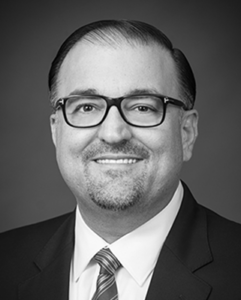As we start the new year, I want to spotlight an issue that cuts across all social determinants of health and yet continues to be underrepresented and often misrepresented. January is National Human Trafficking Prevention Month. It’s a reminder that this pervasive problem affects millions around the world, and thousands in our own backyard.
Our colleagues at the American Hospital Association define human trafficking as the use of force, fraud, or coercion to obtain some type of labor or commercial sex act.
The scope of who is at risk for human trafficking is broad and typically related to age, socioeconomic status, ethnicity/race, sexual orientation, or gender identity. California ranks among the nation’s top four destination states for human trafficking. And in San Diego, one study estimated more than 8,000 people are trafficked each year in our region.
Our hospitals and providers are on the front line in the fight against human trafficking because of their ability to identify and help survivors who come into health care settings. Research has found that as many as 88% of survivors sought medical attention during their exploitation. How can providers make the most of those experiences? A 2022 Community Health Needs Assessment focus group participant describes how hospitals can assist survivors including, “Using language that supports the dignity of patients creates an environment where patients feel safe and improves health outcomes.”
This is why our dedication to understanding and staying informed of best practices in supporting the most vulnerable in our communities can truly make a difference.
Our local government and community partners are collaborating. A significant step forward came from the San Diego County Regional Human Trafficking & CSEC Advisory Council Health Subcommittee, which developed the Welcome Packet : A Guide to Best Practices and Resources to support health care systems in creating their own trauma-informed care approach for survivors. There are opportunities for health systems to get engaged around education or implementing best practices in clinical settings; reach out to me if you are interested in learning more.
We have many challenges in the new year, and we’ll be talking about — and tackling — them in the weeks and months ahead. Human trafficking connects to our work in behavioral health, emergency medical services, health equity, workforce development, and more. Solutions will come not only from targeted efforts on this issue, but also from our work in other key areas. This is a new year and a chance for renewed commitment and collaboration. Let’s not confine our awareness and action to just one month.
